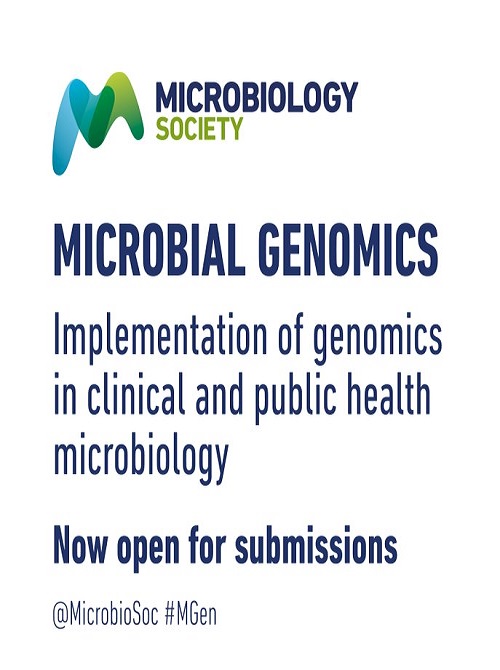与高地蠓(Culicoides impunctatus)相关的新型 Erwinia 的比较基因组学研究
IF 4
2区 生物学
Q1 GENETICS & HEREDITY
引用次数: 0
摘要
欧文氏菌(Enterobacterales: Erwiniaceae)是一类世界性细菌,是各种植物病害的致病菌。然而,该属中的其他物种也被发现作为昆虫内生菌发挥着重要作用,补充宿主的食物。在这里,我描述了与苏格兰高地一种大量叮咬害虫--高地蠓 Culicoides impunctatus(双翅目:Ceratopogonidae)--相关的埃尔温氏菌(Erwimp)。利用混合长短读技术组装了这一新的埃尔文菌种的基因组,并与该属的其他成员进行了比较分析,以了解其潜在的生态位和影响。基因组组成分析表明,Erwimp 与该属的其他内生和外生物种相似,不太可能局限于昆虫宿主。另外一个植物宿主的证据包括类胡萝卜素合成操作子的存在,该操作子是泛变形菌姐妹属中植物相关成员的一个毒力因子。Erwimp 的独特特征包括几个类似 intimin 蛋白的拷贝,这与基因组假基因化的迹象和某些代谢途径的缺失一起,表明了该属其他地方出现的宿主限制因素。此外,在两个野外季节对个体进行的筛查显示,在第二年,Culicoides impunctatus体内没有这种细菌,这表明这种微生物与昆虫之间的相互作用可能是短暂的。这些数据表明,黑头蝇除了叮咬滋扰外,还可能扮演重要角色,作为昆虫载体传播厄温氏蜱,并对周围生物群造成影响。本文章由计算机程序翻译,如有差异,请以英文原文为准。
Comparative genomics of a novel Erwinia species associated with the Highland midge (Culicoides impunctatus)
Erwinia (Enterobacterales: Erwiniaceae) are a group of cosmopolitan bacteria best known as the causative agents of various plant diseases. However, other species in this genus have been found to play important roles as insect endosymbionts supplementing the diet of their hosts. Here, I describe Candidatus Erwinia impunctatus (Erwimp) associated with the Highland midge Culicoides impunctatus (Diptera: Ceratopogonidae), an abundant biting pest in the Scottish Highlands. The genome of this new Erwinia species was assembled using hybrid long and short read techniques, and a comparative analysis was undertaken with other members of the genus to understand its potential ecological niche and impact. Genome composition analysis revealed that Erwimp is similar to other endophytic and ectophytic species in the genus and is unlikely to be restricted to its insect host. Evidence for an additional plant host includes the presence of a carotenoid synthesis operon implicated as a virulence factor in plant-associated members in the sister genus Pantoea. Unique features of Erwimp include several copies of intimin-like proteins which, along with signs of genome pseudogenization and a loss of certain metabolic pathways, suggests an element of host restriction seen elsewhere in the genus. Furthermore, a screening of individuals over two field seasons revealed the absence of the bacteria in Culicoides impunctatus during the second year indicating this microbe-insect interaction is likely to be transient. These data suggest that Culicoides impunctatus may have an important role to play beyond a biting nuisance, as an insect vector transmitting Erwimp alongside any conferred impacts to surrounding biota.
求助全文
通过发布文献求助,成功后即可免费获取论文全文。
去求助
来源期刊

Microbial Genomics
Medicine-Epidemiology
CiteScore
6.60
自引率
2.60%
发文量
153
审稿时长
12 weeks
期刊介绍:
Microbial Genomics (MGen) is a fully open access, mandatory open data and peer-reviewed journal publishing high-profile original research on archaea, bacteria, microbial eukaryotes and viruses.
 求助内容:
求助内容: 应助结果提醒方式:
应助结果提醒方式:


